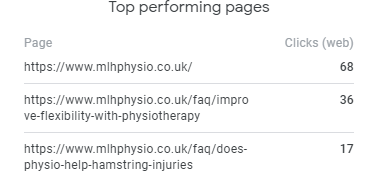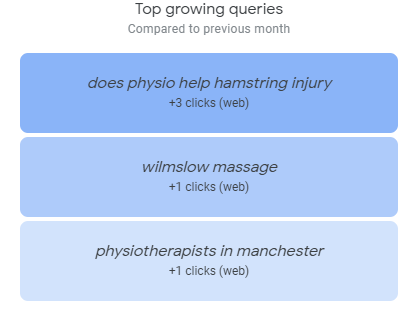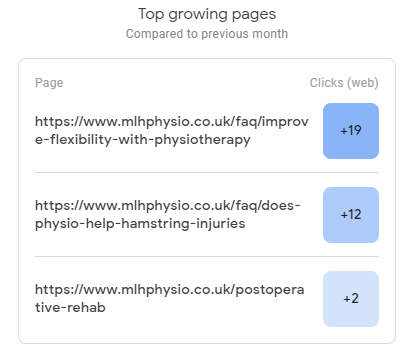How to Drive Consistent Traffic to Your Website Through Content, Without a Blog!
This article shows you how you can drive consistent traffic to your website through long-form content that targets long-tail keywords, without the need to commit to a blog!
If you’re a small business owner, your marketing budget is lean and precious; you want to make sure to prioritise your spending on activities that’ll get the most return. That normally means taking care of the more pressing matters like getting your website up and running, ranking for valuable keywords, building a social media community, gaining press coverage, driving sales, etc.
So, when I suggest content marketing in the form of business blogging to my clients, it’s no surprise that it’s often regarded as being way down the priority list. It’s seen as more of a ‘nice to have’ rather than a necessity of marketing, one which you can think about long into the future once your business is more established.
And I don’t blame you.
When budget and time are scarce resources, it’s important to prioritise what you MUST do vs. what you COULD do. But here’s the thing, for your website to really work for you, you need to be ranking for short-tail and long-tail keywords. You need to be capturing people at the top of the funnel when they don’t yet know exactly what they’re looking for, but they have a problem or question that they turn to Google for. And you can only really do that with a content strategy. Which normally means a blog….
What is a long-tail keyword?
Not all keywords are alike. You probably want to rank for things like your services/products and the main business area you work in. These are your ‘short tail keywords’. Normally 1-3 words like ‘physio in Manchester’ or ‘Sports Physio in Sale’ or ‘Golf physio’ for example. Those you can target by having really good on-page optimisation.
But long-tail keywords are those longer phrases that people type into search engines when they’re looking for more specific information. Things like ‘does physio help improve flexibility?’ or ‘should I see a physio about a gym injury?’ or ‘What kind of injuries do you get playing golf? The search volume for these is pretty low, meaning that you don’t see thousands of people searching for these every day, but the relevancy is huge – when they do search for them, they’re looking for something specific, and you can solve their problem.
The best way to target these long-tail keywords is through blogs or videos so that when people search for them, they somehow land on your website where they can find the answers they’re looking for, build trust with your business, and eventually convert into a customer.
The Benefits of Business Blogging
I discuss the benefits of business blogging in an earlier post, but essentially it allows you to:
Target long-tail keywords
Increase brand awareness
Get found by people who are the very beginning of the purchase journey (top of the funnel)
Gain a loyal following
Build trust
Convert visitors into customers
So, if it’s so simple then why not do it?
It takes time and effort and it’s very much a long-term strategy. You won’t see immediate results. You’ll need to publish regular content, it’ll need to be of good quality, and you’ll need to maintain that in order to reap the benefits. If you can’t commit to blogging regularly, it simply won’t work in your favour and you won’t see results. And this is where the problem lies…
So, what can you do? Is there a solution that works for a business that can’t commit to regular content? Can you still win with content even if you don’t have a blog?
The answer is YES, you just need to get creative.
In this article, I’ll show you how MLH Physio brings in regular traffic to their website via long-form content, that isn’t a blog.
What was the problem:
MLH Physio is a busy physiotherapy business in Manchester and Cheshire. Run by two entrepreneurs, the business owners spend their time taking care of their patients and running several clinics. When they approached me in 2019, they were looking to update their website and drive traffic and bookings. Simply having a website isn’t enough though. To drive consistent traffic without having to pay for advertising, you need SEO. And more importantly, you need to be targeting a good mix of short-tail and long-tail keywords.
When rebuilding the website, we targeted short-tail keywords by using them across the key pages of the website, in the page titles, meta descriptions, and image titles. By having a beautiful, well-structured website, MLH Physio was able to rank for their desired short-tail keywords within the first month.
But people who need a physio don’t always know that’s what they need until they’ve done some digging. And this normally happens by ‘googling’ their symptoms to find out how to solve their problem, be that a running injury, shoulder pain, back pain from bad posture, or a weird clicking sound in their knee!
But after speaking to the business owners we knew that blogging would simply not work. They didn’t have the time to blog regularly, and they didn’t have the budget to outsource it. We had to think outside the box on this one.
The answer? Let’s use your FAQ section in a smart way!
What did we do?
The FAQ section on any website is normally pretty standard and (let’s face it) quite boring. It’ll tackle things like payment options, cancellation policies, pricing etc. We wanted to use the FAQ section to actually answer the type of questions that existing and potential patients would normally turn to Google for.
The research involved a combination of data analysis through keyword research, and knowledge through the owners’ experience of answering patient questions in person, via email, or over the phone. We needed to make sure this section was useful to all visitors, not just a place to capture SEO traffic.
I asked the owners to think about the types of questions they get asked the most by their patients, and the type of information they often have to send via out via email.
I then enhanced this with keyword research, making sure we were capturing the type of questions that people were already asking in search engines, using the right keywords.
To add structure, we split the FAQ section into three main categories:
About MLH physio: this is what would be the standard FAQ section of a regular website. Things like payment terms, appointment booking, cancellation, insurance.
About physiotherapy: general physio and injury-related questions that people tend to ask either in a search engine or via email or phone before they book an appointment.
Sports specific: as MLH physio specialise in sports physio, this is a no-brainer. This relates to sports specific questions around injury prevention and recovery, flexibility, training, and more
We created several FAQs for each section, but rather than provide just a few lines of text, as you would commonly see in FAQ sections, the answers look more like blog articles, with structure, images, helpful and detailed information and a call to action. Take a look at this example with pre-op and post-op physio advice.
How is this not a blog?
For starters it doesn’t look like a blog, it looks like a helpful FAQ section that happens to contain more information than usual. There is no date stamp and no author. It’s evergreen content that will not become obsolete after a few months. For the business owners, they can update the FAQs when needed, or not. There is no pressure to keep producing regular content but there is the security of knowing that the content created is actually working for them.
What are the results?
For starters, MLH Physio ranks on page 1 for all of their desired short-tail keywords. This is a reflection of how well the website is built, and the good quality of the content throughout the entire site.
The FAQ section is doing its job as intended: it drives consistent traffic to the site from visitors who might not have stumbled upon MLH Physio otherwise. The content was published almost 2 years ago and it’s still working for them today! The owners know they made a worthwhile investment, and whenever they’re ready, they can add more useful FAQs at a time that works for them.
This is taken from last month’s Google Search Console report:
Two out of the top 3 performing pages are from the FAQ section.
The top growing query is an FAQ
Two of the top 3 performing pages are FAQ pages.
Yes, that’s right, content that was written 2 years ago is still growing today!
As a small business, this is a huge win. We’re not talking about a website that gets tens of thousands of hits a month, that’s not what they’re looking for! They’re looking for relevant and consistent traffic that’ll result in bookings and new patients - quality over quantity.
Could this work for you?
In an ideal world, you’d have the time to come up with great blogging ideas, do the keyword research, write the content, publish it and promote it – or at least pay someone to do it on your behalf!
But for some businesses, that’s not a viable option. And this shows you that there are solutions that’ll still work for you.
So, if you’ve been struggling to produce regular content, or you’re simply not seeing results from your blog because you can’t commit to writing regularly, then fear not. Together we can come up with a great long-term solution that’ll work for your business and your schedule.
Get in touch to discuss further, I’d love to help.






